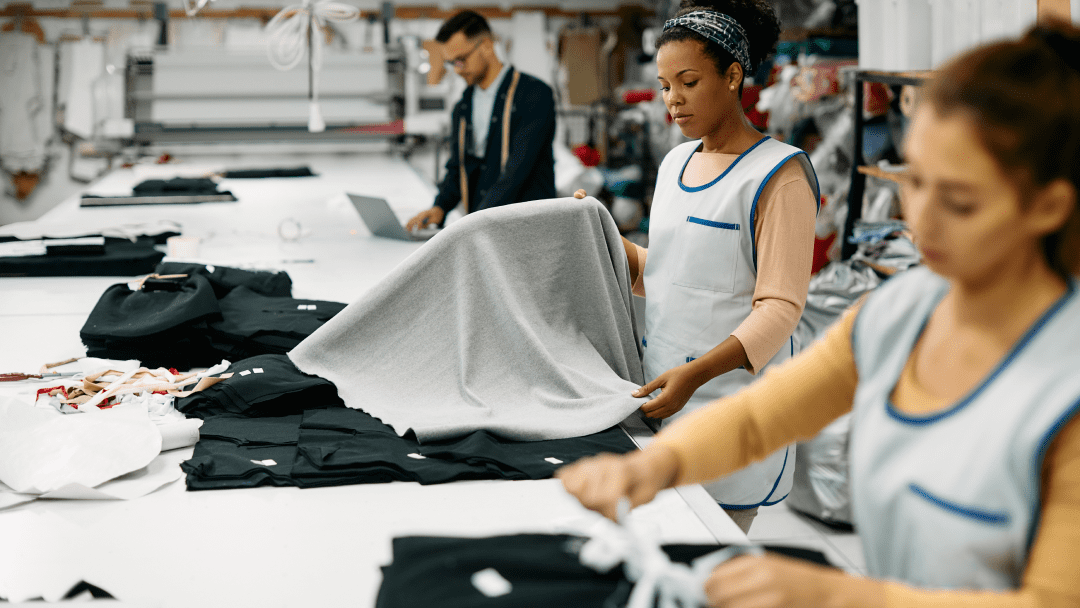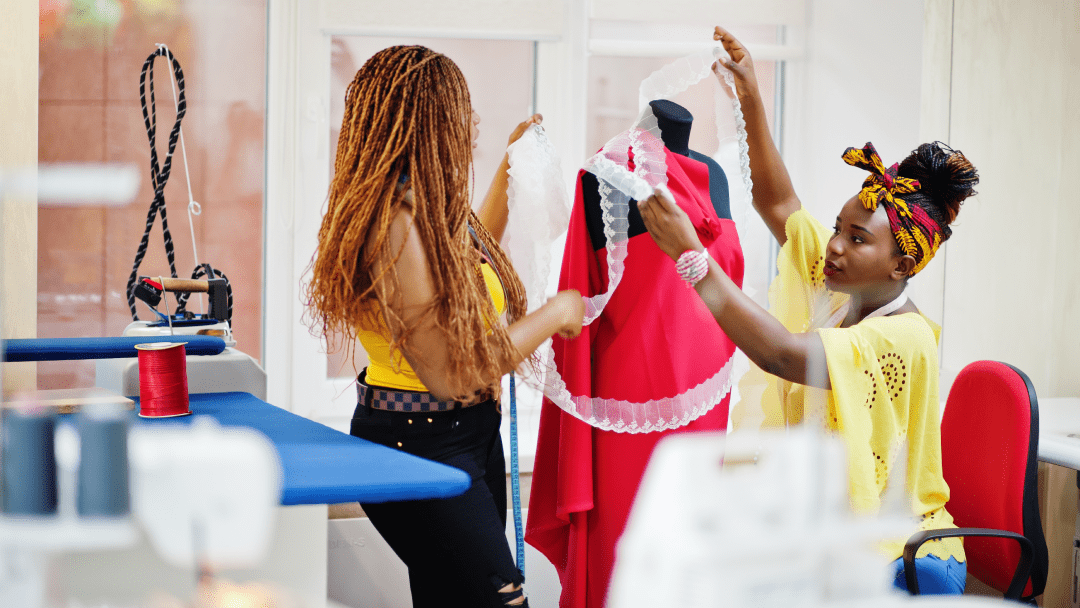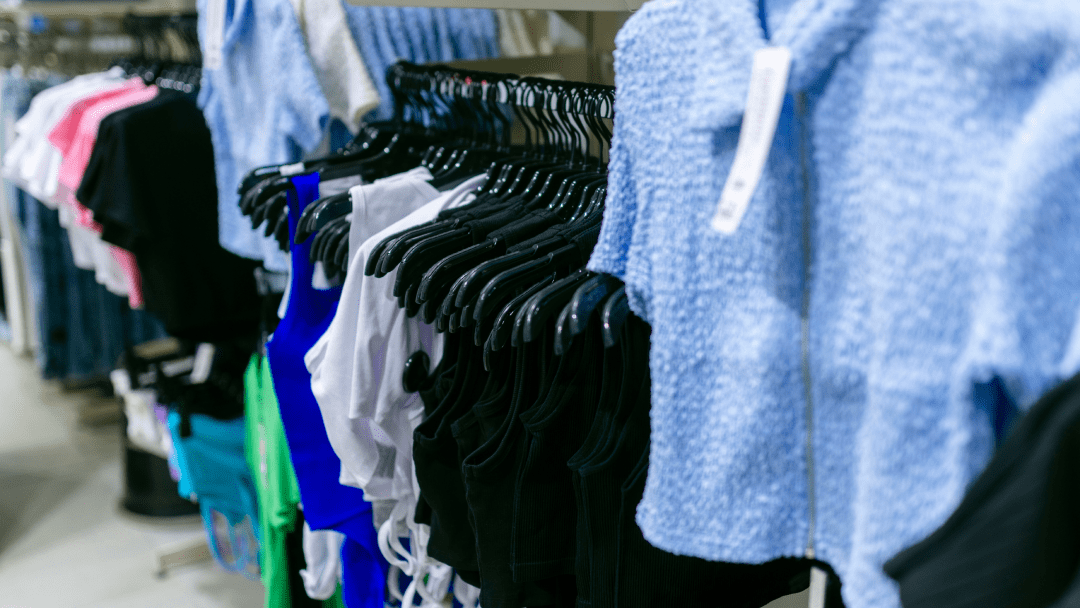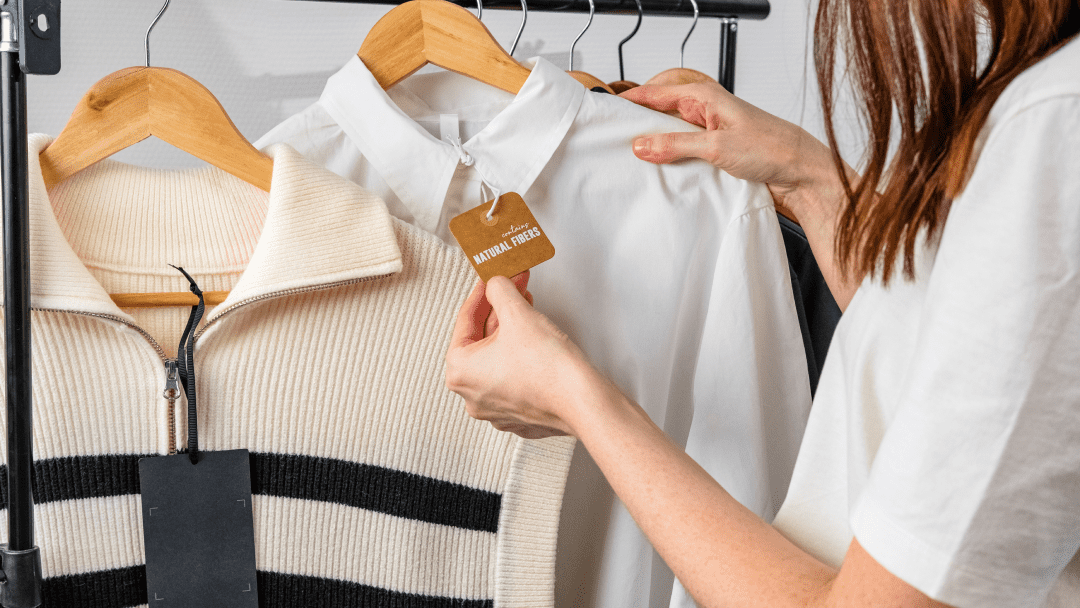The clothing manufacturing has long been synonymous with glamor and creativity, yet beneath its surface lies a complex web of supply chains, labor practices, and environmental impacts. In recent years, there has been a growing realization of the imperative for ethical and sustainable manufacturing practices in the clothing industry.
This article embarks on a journey through the heart of this critical topic, exploring why it matters and how it affects not only the industry itself but also workers, consumers, and the environment. Additionally, we delve into the evolving landscape that is driving the fashion industry towards greater responsibility.
Chapter 1: The Imperative of Ethical and Sustainable Manufacturing

A. Why It Matters
The clothing industry is one of the largest and most influential sectors in the global economy, touching the lives of billions. However, its practices have often been associated with exploitation, environmental degradation, and social injustice. The significance of ethical and sustainable manufacturing practices cannot be overstated.
First and foremost, ethical manufacturing is a moral imperative. It ensures that the individuals who produce our clothing are treated fairly, earn living wages, and work in safe conditions. It upholds their basic human rights and dignity, preventing the exploitation of vulnerable workers, including child labor and forced labor.
Sustainable manufacturing, on the other hand, is essential for the preservation of our planet. The clothing industry is notorious for its excessive resource consumption and pollution. By embracing sustainable practices, we reduce water usage, energy consumption, and waste generation. Sustainable materials, such as organic cotton and recycled fibers, are gentler on the environment, mitigating the industry’s ecological footprint.
Moreover, ethical and sustainable practices have a profound impact on consumers. In an era of heightened awareness and conscious consumerism, individuals are increasingly concerned about the ethical and environmental implications of their purchasing decisions. Brands that prioritize ethical and sustainable manufacturing not only meet consumer demands but also build trust and loyalty.
B. The Road to Responsibility
The journey toward ethical and sustainable manufacturing in the clothing industry is a dynamic one, marked by both progress and challenges. Several factors contribute to the evolving landscape of responsibility.
- Consumer Awareness: The rise of social media and information accessibility has empowered consumers to demand transparency and ethical practices from fashion brands. Consumer activism and boycotts have forced companies to take action.
- Regulatory Initiatives: Governments and international organizations have introduced regulations and standards to enforce ethical labor practices and sustainability in the fashion supply chain. This includes measures to combat child labor, forced labor, and environmental violations.
- Industry Collaboration: Brands and manufacturers are increasingly collaborating to share best practices and drive industry-wide change. Initiatives like the Fashion Revolution movement advocate for transparency and accountability.
- Innovation: Advances in technology and sustainable materials are enabling the fashion industry to explore new avenues for ethical and sustainable manufacturing. From 3D printing to circular fashion, innovation is shaping the future of fashion.
Ethical and sustainable manufacturing practices are no longer a choice but a necessity for the clothing industry. They uphold human rights, protect the environment, and respond to consumer demands.
As the industry continues its journey towards responsibility, it is essential for all stakeholders, including brands, manufacturers, consumers, and regulators, to play their part in shaping a more ethical, sustainable, and responsible fashion ecosystem. This is not just a trend but a transformative shift that will define the future of fashion.
Chapter 2: Ethical Labor Practices

The second chapter in our exploration of ethical and sustainable clothing manufacturing practices takes us into the heart of the labor force behind the fashion industry. We delve into the critical issues of fair wages, safe working conditions, and workers’ rights that define ethical manufacturing.
Additionally, we address the pressing concerns of child labor and forced labor within the clothing industry and strategies aimed at combating these egregious practices.
A. Fair Wages and Working Conditions
In the realm of ethical manufacturing, fair wages and safe working conditions are non-negotiable cornerstones. The well-being and dignity of the workers who create our clothing must be upheld at all times. Here’s why these aspects are pivotal:
- Fair Wages: Ensuring fair wages means that workers are paid a wage that not only meets their basic needs but also allows for a decent standard of living. This is essential in preventing exploitation and poverty within the workforce. Ethical manufacturers recognize that fair compensation is not just a matter of corporate responsibility; it’s a matter of human rights.
- Safe Working Conditions: Safe working conditions are paramount to protect the physical and mental health of workers. The fashion industry has a history of dangerous factories, accidents, and hazardous materials. Ethical manufacturing prioritizes safety measures, regular inspections, and a commitment to minimizing workplace risks.
- Workers’ Rights: Workers’ rights encompass a range of protections, including the right to unionize, collective bargaining, and freedom from discrimination and harassment. Ethical manufacturers uphold and respect these rights, providing an environment where workers can voice their concerns and collectively negotiate for better conditions.
- Child Labor and Forced Labor: Two deeply troubling issues continue to haunt the clothing industry: child labor and forced labor. These practices violate fundamental human rights and undermine the ethical foundation of manufacturing. Addressing these challenges is of utmost importance:
- Child Labor: Child labor is a global concern that affects countless children in various industries, including fashion. Ethical manufacturers take a stand against child labor by ensuring that no child under the legal working age is employed. They also go further by creating systems to verify the age of workers to prevent any potential violations.
- Forced Labor: Forced labor, often associated with modern slavery, is a grave human rights violation. Ethical manufacturers implement strict policies and audits to ensure that no worker is subjected to forced labor practices, such as debt bondage or coercion. Transparency and supply chain traceability are essential tools in combating this issue.
B. Strategies to Combat Child and Forced Labor
Addressing child labor and forced labor requires a multi-pronged approach:
- Supply Chain Transparency: Manufacturers must have clear visibility into their supply chains to identify potential risks. Transparency enables brands to trace the origins of their products and ensure that ethical standards are met.
- Auditing and Certification: Independent audits and certifications can help verify compliance with ethical labor practices. Organizations like Fair Trade and the Ethical Trading Initiative provide frameworks for responsible production.
- Collaboration: Collaboration among brands, manufacturers, governments, and NGOs is essential to create a united front against child and forced labor. Initiatives like the Alliance to End Child Labor in the Apparel and Footwear Sector seek to eradicate child labor collectively.
- Education and Awareness: Raising awareness about the issues of child and forced labor is crucial. Brands and consumers alike can play a role in educating the public and driving change.
In conclusion, ethical labor practices are the backbone of responsible clothing manufacturing. Fair wages, safe working conditions, and workers’ rights are non-negotiable ethical standards. Addressing child labor and forced labor requires diligence, transparency, and collaboration across the fashion industry.
By championing these principles, ethical manufacturers are not only creating better working conditions but also sending a powerful message that ethics and sustainability are integral to the future of fashion.
Chapter 3: Sustainable Production Methods

In our ongoing exploration of ethical and sustainable clothing manufacturing practices, we now venture into the realm of sustainable production methods.
This chapter delves into the crucial aspects of sustainable materials and how they are transforming the fashion industry, as well as the innovative production processes that minimize environmental impact. Let’s embark on a journey of eco-friendly choices and responsible manufacturing.
A. Sustainable Materials
The fashion industry has a significant impact on the environment, primarily due to the materials used in clothing production. However, a wave of change is sweeping through the industry as sustainable materials take center stage:
- Eco-friendly Fabric Choices:
– Organic Cotton: Organic cotton is grown without synthetic pesticides or genetically modified seeds. It promotes soil health and reduces water consumption, making it a more sustainable choice than conventional cotton.
– Recycled Polyester: Recycled polyester is derived from post-consumer plastic bottles and other recycled sources. It reduces plastic waste and lessens the demand for virgin polyester production.
– Hemp: Hemp is a highly sustainable crop that requires minimal water and pesticides. It yields strong and durable fibers, making it an eco-friendly alternative.
– Tencel (Lyocell): Tencel is made from sustainably sourced wood pulp, often from eucalyptus or beech trees. The closed-loop production process minimizes environmental impact and chemical use.
– Piñatex: Piñatex is a unique sustainable material made from pineapple leaf fibers. It provides an alternative to traditional leather and reduces waste in the pineapple industry. - Innovative Sustainable Materials:
– Mycelium Leather: Mycelium, the root structure of fungi, is being used to create sustainable and biodegradable leather alternatives. It offers a cruelty-free and environmentally friendly option.
– Lab-Grown Fabrics: Laboratory-grown fabrics, such as lab-grown silk and lab-grown leather, offer sustainable and ethical alternatives to traditional materials.
– Recyclable Textiles: Researchers are developing textiles that can be easily recycled into new fabrics, reducing the need for virgin materials.
B. Reducing Environmental Impact
While sustainable materials are essential, the overall sustainability of clothing manufacturing also hinges on production processes:
- Minimizing Waste: Sustainable production aims to reduce waste at every stage. This includes optimizing pattern layouts to minimize fabric waste, recycling cutting scraps, and finding innovative ways to repurpose materials.
- Energy Efficiency: Manufacturers are increasingly investing in energy-efficient machinery and practices, reducing the carbon footprint of the production process.
- Water Conservation: The fashion industry is one of the largest consumers of water. Sustainable production methods focus on minimizing water usage through closed-loop systems, wastewater treatment, and responsible dyeing processes.
- Low-Impact Dyes: Traditional dyeing processes are notorious for their environmental impact. Sustainable production often involves using low-impact or natural dyes that reduce chemical pollution.
- Circular Fashion: The concept of circular fashion aims to create a closed-loop system where clothing is designed to be easily disassembled, repaired, and recycled, extending the lifespan of garments.
- Local Sourcing: Reducing the carbon footprint of transportation by sourcing materials and production locally is another strategy for sustainable manufacturing.
Sustainable production methods are reshaping the fashion industry, emphasizing responsible material choices and environmentally friendly processes. By choosing eco-friendly fabrics and implementing sustainable production practices, the fashion industry can significantly reduce its environmental impact.
As consumers increasingly prioritize sustainability in their purchasing decisions, adopting these practices is not only ethical but also economically beneficial for brands. The journey towards sustainable fashion is a collective effort that requires commitment, innovation, and a deep concern for the well-being of our planet.
Chapter 4: Transparency and Accountability

In the ongoing exploration of ethical and sustainable clothing manufacturing practices, we now shine a spotlight on the crucial aspects of transparency and accountability within the fashion industry.
This chapter uncovers the significance of transparent supply chains and their role in building trust with consumers.
Additionally, we delve into industry certifications and reporting mechanisms that hold manufacturers accountable for their ethical and sustainable practices. Let’s embark on a journey of openness and responsibility in the fashion supply chain.
A. Supply Chain Transparency: Understanding the Significance:
Supply chain transparency is a foundational pillar of ethical and sustainable clothing manufacturing practices. It involves making the entire journey of a product, from raw materials to the final consumer, visible and accessible. Here’s why it matters:
- Consumer Trust: Transparent supply chains build trust with consumers. When shoppers have access to information about how a product is made, where its components come from, and the conditions of the workers involved, they can make more informed and ethical purchasing decisions.
- Accountability: Transparency holds brands and manufacturers accountable for their practices. When every step of the supply chain is visible, any unethical or unsustainable practices are more likely to be exposed and addressed.
- Identification of Risks: Transparency helps identify potential risks in the supply chain, such as child labor, forced labor, or environmental violations. Brands can then take proactive measures to mitigate these risks.
- Improved Traceability: Transparent supply chains enable better traceability of products, which is essential for recalls, quality control, and addressing any issues promptly.
- Ethical Sourcing: Transparency allows brands to ensure that raw materials are sourced ethically, with respect for workers’ rights and environmental considerations.
- Sustainable Sourcing: It also helps in tracking the sustainability of raw materials, ensuring that they meet eco-friendly standards.
B. Exploring Industry Certifications:
- Fair Trade Certification: Fair Trade certification ensures that workers are paid fair wages, work in safe conditions, and enjoy other benefits such as community development projects. It also prohibits child and forced labor.
- GOTS (Global Organic Textile Standard): GOTS certification guarantees that textiles are produced using organic farming practices and adhere to environmental and social criteria.
- OEKO-TEX Standard 100: This certification ensures that textile products are free from harmful substances, making them safe for consumers and workers.
- B Corp Certification: B Corps are businesses that meet high social and environmental standards. B Corp certification assesses a company’s impact on its workers, community, and the environment.
C. Reporting Mechanisms:
- Sustainability Reports: Many brands publish annual sustainability reports detailing their efforts and progress in ethical and sustainable practices. These reports often include information on labor practices, environmental initiatives, and community engagement.
- Supply Chain Audits: Independent audits of supply chain facilities are conducted to assess compliance with ethical and sustainable standards. Audit results are typically reported to the public.
- Third-Party Verification: Brands may enlist the services of third-party organizations to verify and certify their ethical and sustainable practices. This adds an extra layer of credibility.
In conclusion, transparency and accountability are at the core of ethical and sustainable clothing manufacturing practices. Transparent supply chains empower consumers with information, hold manufacturers accountable, and help identify and address ethical and environmental risks. Industry certifications and reporting mechanisms provide essential tools for assessing and verifying ethical and sustainable practices.
As consumers increasingly seek transparency and accountability in the brands they support, companies that prioritize these principles not only meet consumer expectations but also contribute to a more responsible and sustainable fashion industry.
The journey towards a fully transparent and accountable fashion supply chain is ongoing, but it’s a path that all stakeholders must continue to tread for the betterment of the industry and the world.
Chapter 5: Challenges and Solutions

In our exploration of ethical and sustainable clothing manufacturing practices, we now confront the challenges presented by complex global supply chains and examine strategies to enhance transparency.
Additionally, we delve into the difficulties of scaling sustainable practices and explore innovative solutions to make them more accessible. Let’s navigate the intricacies of these challenges and unveil potential solutions for a more responsible fashion industry.
A. Complex Supply Chains
1. Addressing the Challenges:
Global supply chains are the lifeblood of the fashion industry, allowing brands to source materials, manufacture products, and reach consumers worldwide. However, their complexity presents several challenges:
- Lack of Transparency: Supply chains often involve multiple tiers of suppliers, making it challenging to trace the origins of raw materials and assess labor and environmental practices at every stage.
- Ethical Risks: Complex supply chains increase the risk of unethical labor practices, such as child labor and forced labor, going undetected.
- Environmental Impact: Global supply chains contribute to higher carbon emissions due to transportation and may involve suppliers with unsustainable practices.
- Communication Barriers: Cultural and language differences can create communication challenges between brands and suppliers, making it difficult to convey ethical and sustainable standards.
2. Strategies to Enhance Transparency:
- Supply Chain Mapping: Brands can invest in supply chain mapping tools to gain a comprehensive view of their supply networks, helping identify potential ethical and environmental risks.
- Supplier Audits: Conducting regular audits of suppliers’ facilities can assess compliance with ethical and sustainable standards. Independent third-party audits add credibility.
- Transparency Initiatives: Collaborative industry initiatives, like the Transparency Pledge, encourage brands to disclose information about their supply chains, promoting openness.
- Blockchain Technology: Blockchain can be used to create transparent and tamper-proof records of supply chain transactions, enhancing traceability.
B. Scaling Sustainability

1. Examine the Difficulties:
While sustainability is a noble goal, scaling sustainable practices across the entire fashion industry poses several challenges:
- Cost Implications: Sustainable materials and practices can be more expensive, potentially increasing production costs.
- Limited Access: Not all manufacturers have easy access to sustainable materials or technologies, particularly in developing regions.
- Consumer Demand: Scaling sustainability requires increased demand for sustainable products, and not all consumers are willing to pay a premium for eco-friendly clothing.
- Innovation Hurdles: Developing and implementing sustainable practices often involves innovative solutions, which may face resistance or skepticism within the industry.
2. Innovative Solutions:
- Economies of Scale: As sustainable practices become more widespread, the cost of sustainable materials and technologies may decrease, making them more accessible to manufacturers.
- Collaboration: Brands and manufacturers can collaborate to share best practices and resources, making sustainability more achievable for all.
- Consumer Education: Educating consumers about the environmental and ethical benefits of sustainable fashion can increase demand and incentivize brands to prioritize sustainability.
- Government Incentives: Governments can provide incentives and regulations that encourage sustainable practices, such as tax breaks or environmental standards.
The challenges of complex supply chains and scaling sustainability in the fashion industry are formidable but not insurmountable. Enhanced transparency through supply chain mapping, audits, and collaborative initiatives can help address ethical and environmental risks. Scaling sustainability requires a multifaceted approach, including cost reduction, collaboration, consumer education, and government support.
Chapter 6: Case Studies in Ethical and Sustainable Manufacturing

In this chapter, we turn our attention to real-world examples of brands and initiatives that serve as beacons of ethical and sustainable clothing manufacturing practices. We will highlight industry leaders who have made substantial commitments to ethical labor practices and sustainable production.
Additionally, we’ll showcase innovative projects and collaborations that are driving positive change in the fashion industry, inspiring others to follow suit.
A. Industry Leaders
- Patagonia: Patagonia is a renowned outdoor clothing brand that has set the gold standard for ethical and sustainable practices. They not only use recycled materials but also actively encourage customers to repair and recycle their garments. Patagonia’s commitment to corporate responsibility extends to fair wages, safe working conditions, and environmental protection.
- EILEEN FISHER: EILEEN FISHER is dedicated to creating timeless and sustainable fashion. They have a Vision2020 commitment, which includes ambitious goals such as using 100% organic fibers and 100% sustainable fibers by the year 2020. Their transparent supply chain and emphasis on fair labor practices have earned them recognition as a leader in sustainable fashion.
- TOMS: While TOMS is best known for its “One for One” shoe donation program, they also practice ethical manufacturing. They have partnered with factories that adhere to strict labor standards, ensuring workers are paid fair wages and have safe working conditions. TOMS has expanded its impact beyond shoes to eyewear and coffee, incorporating sustainability into their business model.
B. Innovative Initiatives: Showcasing Positive Change
- Fashion Revolution: Fashion Revolution is a global movement that campaigns for a more transparent and ethical fashion industry. They annually host “Fashion Revolution Week,” encouraging consumers to ask brands, “Who made my clothes?” This initiative promotes transparency and accountability.
- The Higg Index: Developed by the Sustainable Apparel Coalition, the Higg Index is a tool used by brands and manufacturers to measure and score the environmental and social performance of their products and supply chains. It promotes continuous improvement in sustainability practices.
- Circular Fashion: Brands like H&M and Zara are exploring circular fashion models where products are designed for longevity and recyclability. They offer recycling programs, encouraging customers to return old garments for reuse or recycling.
- Sustainable Materials Collaborations: Innovations in sustainable materials are often achieved through collaborations. For example, Bolt Threads partners with fashion brands to create clothing made from lab-grown spider silk, a sustainable alternative to traditional materials.
- The Ellen MacArthur Foundation: This foundation works towards a circular economy in fashion, where clothing is designed to last longer, be easily repaired, and recycled. Their report, “A New Textiles Economy,” outlines a vision for a more sustainable fashion industry.
These case studies and initiatives illustrate that ethical and sustainable clothing manufacturing practices are not only achievable but also beneficial for brands and the planet.
Industry leaders demonstrate that profitability and responsibility can coexist, setting a precedent for others to follow. Innovative projects and collaborations are pushing the boundaries of what’s possible in fashion, offering solutions to complex challenges.
OL Garments: Your Gateway to Private Label Success

Creating your own brand can be a dream come true. Imagine seeing your designs on the racks, worn by fashion-forward individuals, and making a mark in the industry.
OL Garments is here to make that dream a reality for you. With a strong legacy and a commitment to quality, OL Garments is the perfect partner to kickstart your private label journey.
A. About OL Garments
OL Garments is not just another clothing manufacturer in singapore; it’s a trusted name in the fashion industry. With decades of experience and a track record of excellence, OLGarments has earned a reputation for delivering top-notch quality garments.
From sourcing the finest materials to employing skilled artisans, every step in the production process reflects our dedication to excellence.
B. Why Choose OL Garments for Your Private Label Business?
- Quality Assurance: When you partner with OL Garments, you can rest assured that your private label products will meet the highest standards of quality. Our stringent quality control measures ensure that every garment leaving our facility is flawless.
- Customization: We understand that your brand is unique, and we offer a high degree of customization to reflect your vision. From fabric selection to design details, you have the freedom to create garments that truly represent your brand identity.
- Efficiency: Time is of the essence in the fashion industry. At OL Garments, we understand the importance of swift turnaround times. Our state-of-the-art machinery and highly skilled workforce enable us to deliver your orders with exceptional efficiency. In fact, our speed sets us apart from the competition. Our sampling process can be completed within just 1 month, while production is typically finalized in a mere 2 months. We know that time is money in fashion, and we’re committed to helping you stay ahead of the game.
- Cost-Effective: We offer competitive pricing without compromising on quality. Our commitment to providing cost-effective solutions means that you can enter the private label market without worrying about breaking the bank. One key advantage we offer is a lower Minimum Order Quantity (MOQ) compared to our competitors. With OL Garments, your MOQ is set at just 300 pieces, making it easier than ever to get your brand off the ground while managing your budget effectively.
- Sustainability: OL Garments is committed to sustainability. We offer eco-friendly materials and production processes, allowing you to align your brand with the growing demand for sustainable fashion.
C. The Private Label Experience with OL Garments
Starting your private label business with OL Garments is a seamless and rewarding journey. Here’s what you can expect:
- Consultation: We begin by understanding your brand’s vision and requirements. Our team of experts will guide you through the process, offering insights and recommendations to help you make informed decisions.
- Design and Development: Once we have a clear understanding of your needs, our design and development team will work closely with you to bring your ideas to life. From sketches to prototypes, we ensure that every detail aligns with your brand’s identity.
- Production: Our state-of-the-art manufacturing facility takes over, turning your designs into reality. Our skilled craftsmen and cutting-edge machinery guarantee the production of high-quality garments.
- Quality Control: Quality is non-negotiable at OL Garments. Every garment undergoes rigorous quality control checks to ensure it meets our exacting standards.
- Packaging and Delivery: Your private label products are carefully packaged and prepared for delivery. Whether you’re selling online or in physical stores, we ensure your orders are ready for the market.
- Ongoing Support: Our partnership doesn’t end with delivery. We provide ongoing support, assisting with reorders, addressing any concerns, and helping you adapt to market trends.
Your dream of launching a private label fashion brand is within reach, andOL Garments is your trusted partner on this exciting journey. With a legacy of quality, customization, and sustainability, we provide the foundation for your brand’s success. Don’t wait any longer; take the first step towards fashion dominance with OL Garments by your side. Your brand, our expertise – together, we’ll create something remarkable.
Chapter 7: Consumer Influence and Responsibility

We’ll learn about how consumers can empower positive change in the fashion industry and provide guidance on making responsible purchasing decisions that align with their values.
A. Empowering Consumers: Discussing Consumer Influence
The power of consumers in shaping the fashion industry is immense. As awareness of ethical and sustainable clothing practices grows, consumers are increasingly demanding transparency and responsibility from brands. Here’s why consumers play a pivotal role:
- Market Influence: Consumers’ purchasing choices directly impact the market. When consumers prioritize ethical and sustainable brands, they signal a shift in demand that compels the industry to follow suit.
- Advocacy: Informed consumers often become advocates for ethical and sustainable fashion. They share information, raise awareness, and hold brands accountable for their practices through social media and activism.
- Economic Pressure: Ethical and sustainable brands that align with consumer values thrive, while those that do not face economic pressure to change their practices.
- Brand Reputation: Brands that prioritize ethical and sustainable practices enhance their reputation and appeal to conscious consumers. A positive reputation can lead to long-term loyalty.
B. Making Informed Choices: Guidance for Responsible Purchasing
- Research Brands: Before making a purchase, research brands to learn about their values, practices, and transparency. Websites, social media, and sustainability reports are valuable sources of information.
- Ask Questions: Don’t hesitate to ask brands about their supply chain, labor practices, and sustainability efforts. Brands committed to transparency should readily provide answers.
- Support Sustainable Materials: Choose products made from sustainable materials like organic cotton, recycled fibers, or innovative eco-friendly fabrics. These materials have a lower environmental impact.
- Quality over Quantity: Invest in high-quality, durable clothing that lasts longer. Fast fashion promotes disposable clothing, contributing to waste.
- Secondhand and Vintage Shopping: Explore secondhand and vintage stores, as well as online marketplaces, to extend the life of clothing and reduce the demand for new production.
- Repair and Upcycle: Instead of discarding damaged clothing, consider repairing or upcycling it. Many brands and local tailors offer repair services.
- Sustainable Brands: Support brands that prioritize ethical labor practices, sustainability, and transparency. Look for certifications like Fair Trade, GOTS, or B Corp.
- Participate in Movements: Join movements like Fashion Revolution Week, which encourages consumers to ask brands, “Who made my clothes?” Engaging in such initiatives raises awareness and drives accountability.
- Educate Yourself: Continuously educate yourself about ethical and sustainable fashion. Books, documentaries, and articles offer valuable insights.
- Share Your Journey: Share your experiences and knowledge with friends and family. Encourage them to join you in making responsible fashion choices.
Consumers hold the key to transforming the fashion industry into a more ethical and sustainable one. Their choices, demands for transparency, and advocacy can drive positive change and encourage brands to prioritize responsible practices.
Making informed choices, supporting ethical brands, and participating in sustainability movements are all steps consumers can take to contribute to a more responsible fashion landscape.
As consumers increasingly recognize their role in this transformation, the industry is compelled to adapt, ultimately leading to a brighter and more sustainable future for fashion. By empowering consumers with knowledge and fostering a sense of responsibility, we can collectively shape a fashion industry that aligns with our values and respects the planet and its people.
Chapter 8: The Path Forward

In this final chapter, we illuminate the path forward for ethical and sustainable clothing manufacturing practices. We underscore the significance of industry-wide collaboration and collective action, emphasizing that positive change is most impactful when undertaken together.
Additionally, we stress the importance of continuous education, advocacy, and policy changes as essential tools in the journey towards a more responsible and ethical clothing manufacturing industry.
A. Collective Action: Emphasizing Industry-Wide Collaboration
The challenges and complexities of transforming the fashion industry into a more ethical and sustainable one are vast, and no single entity can address them alone. Collective action among brands, manufacturers, consumers, and governments is crucial. Here’s why:
- Shared Responsibility: The fashion industry encompasses a vast global supply chain, and each participant has a role to play. Collaborative efforts distribute responsibility more equitably.
- Amplified Impact: Collective action magnifies the impact of individual efforts. When brands and organizations work together towards a common goal, their combined influence is substantial.
- Standardization: Collaboration can lead to the development of industry-wide standards and best practices, making it easier for all stakeholders to adhere to ethical and sustainable principles.
- Resource Sharing: Collaborative initiatives allow the pooling of resources, expertise, and knowledge, accelerating progress in responsible manufacturing.
- Transparency: Collaborative efforts foster transparency, as brands share information and insights about ethical practices and sustainable solutions.
- Consumer Confidence: Industry-wide collaboration builds consumer confidence. When consumers see brands working together for a common cause, they are more likely to trust and support those brands.
Examples of collective action include multi-brand sustainability initiatives, industry partnerships, and collaborative supply chain audits. Brands are increasingly joining forces to address shared challenges and promote ethical and sustainable practices.
B. Promoting Ongoing Learning and Advocacy
- Education: Continued education is a cornerstone of progress. Brands, manufacturers, and consumers should invest in learning about evolving ethical and sustainable practices. Workshops, conferences, and online resources can provide valuable insights.
- Advocacy: Advocacy involves actively supporting and promoting ethical and sustainable practices. Brands can advocate for policy changes that incentivize responsible manufacturing, such as tax incentives for sustainable practices or regulations against exploitative labor.
- Consumer Engagement: Brands can engage consumers in advocacy efforts by encouraging them to support initiatives, sign petitions, and participate in campaigns for a more ethical fashion industry.
- Policy Changes: Governments play a pivotal role in shaping the industry through policy changes. Advocacy efforts can influence policymakers to enact regulations that promote ethical and sustainable practices.
- Supply Chain Transparency: Advocacy for greater supply chain transparency, such as advocating for the implementation of blockchain technology, can enhance traceability and accountability.
- Worker Empowerment: Advocacy should also prioritize the empowerment of workers and their rights. Supporting workers’ unions and labor organizations can drive change from within the industry.
The path forward towards a more ethical and sustainable clothing manufacturing industry is marked by collective action, education, and advocacy. Collaboration among stakeholders amplifies the impact of responsible practices, making the industry’s transformation more effective.
Continuous education ensures that brands and individuals remain informed about the latest developments in ethical and sustainable fashion. Advocacy efforts drive policy changes, create a demand for responsible products, and empower workers.
Ethical and sustainable clothing manufacturing practices are not only a moral imperative but also a path to a more resilient and prosperous fashion industry.
By understanding the significance of these practices, addressing the challenges, and collectively working towards a sustainable future, we can ensure that the clothing we wear reflects not only our style but also our commitment to a more ethical and eco-conscious world.
The journey toward ethical and sustainable clothing manufacturing practices is a shared responsibility, and it is our duty to pave the way for a better, more responsible industry.
